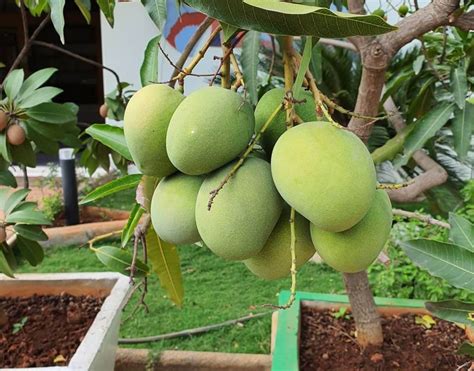How to Grow a Mango Tree From Seed: A Comprehensive Guide
Growing a mango tree from seed can be a rewarding experience, offering a taste of the tropics in your own backyard. While it's not guaranteed to produce the exact same fruit as the parent tree, the process is surprisingly straightforward. This comprehensive guide will walk you through each step, from seed selection to mature tree care.
Choosing and Preparing Your Mango Seed
Selecting the Right Seed: Begin by choosing a ripe, healthy mango from a reputable source. The seed should be plump and free from any signs of damage or disease. Ideally, select a seed from a variety known for its success in your climate zone.
Extracting the Seed: Carefully cut open the mango and gently remove the seed. Rinse it thoroughly under cool water to remove any remaining mango flesh. This prevents mold and rot.
Preparing the Seed for Germination: The next step is crucial. You'll need to carefully remove the hard outer shell, revealing the inner kernel. Handle this delicately to avoid damaging the embryo inside. Be gentle!
Planting Your Mango Seed
Choosing the Right Growing Medium: Use a well-draining potting mix. A blend of potting soil, perlite, and vermiculite works well. Avoid using heavy clay soils, which can retain too much moisture and lead to root rot.
Planting Your Seed: Plant the seed with the pointed end facing upwards. Depth is key. Bury it about 1-2 inches deep. Ensure the soil is moist but not waterlogged.
Creating the Ideal Environment: Provide ample sunlight and warmth. Mango trees need plenty of sunlight, ideally at least 6 hours a day. A warm, humid environment is best for germination.
Caring for Your Young Mango Tree
Watering: Maintain consistently moist soil, but avoid overwatering. Allow the soil to dry slightly between waterings to prevent root rot.
Fertilizing: Once your seedling has developed a few true leaves, start fertilizing with a balanced, water-soluble fertilizer. Follow the instructions on the packaging.
Repotting: As your tree grows, it will need to be repotted into larger containers. This allows for adequate root growth. Use larger pots with drainage holes.
Transplanting Your Mango Tree Outdoors
Choosing the Right Location: Once your mango tree is large enough (at least 1-2 feet tall), you can consider transplanting it outdoors. Choose a sunny location with well-drained soil. Protect it from strong winds, especially when young.
Preparing the Planting Hole: Dig a hole twice as wide and as deep as the root ball. Amend the soil with compost or other organic matter to improve drainage and fertility.
Transplanting: Carefully remove the tree from its pot, gently loosen the roots, and place it in the planting hole. Fill the hole with soil, firming it around the roots. Water thoroughly.
Maintaining Your Mature Mango Tree
Watering: Once established, your mango tree will require regular watering, especially during dry periods. Water deeply and infrequently rather than shallowly and frequently.
Fertilizing: Continue fertilizing your tree annually using a balanced fertilizer. This will help promote healthy growth and fruit production.
Pruning: Prune your mango tree regularly to maintain its shape and remove dead or diseased branches. Pruning also encourages fruiting.
Pest and Disease Control: Be vigilant in monitoring your tree for pests and diseases. Address any problems promptly to prevent serious damage.
Growing a mango tree from seed takes patience and dedication, but the rewards of fresh, homegrown mangoes make it a worthwhile endeavor. Follow these steps, and you'll be well on your way to enjoying the sweet taste of success!
